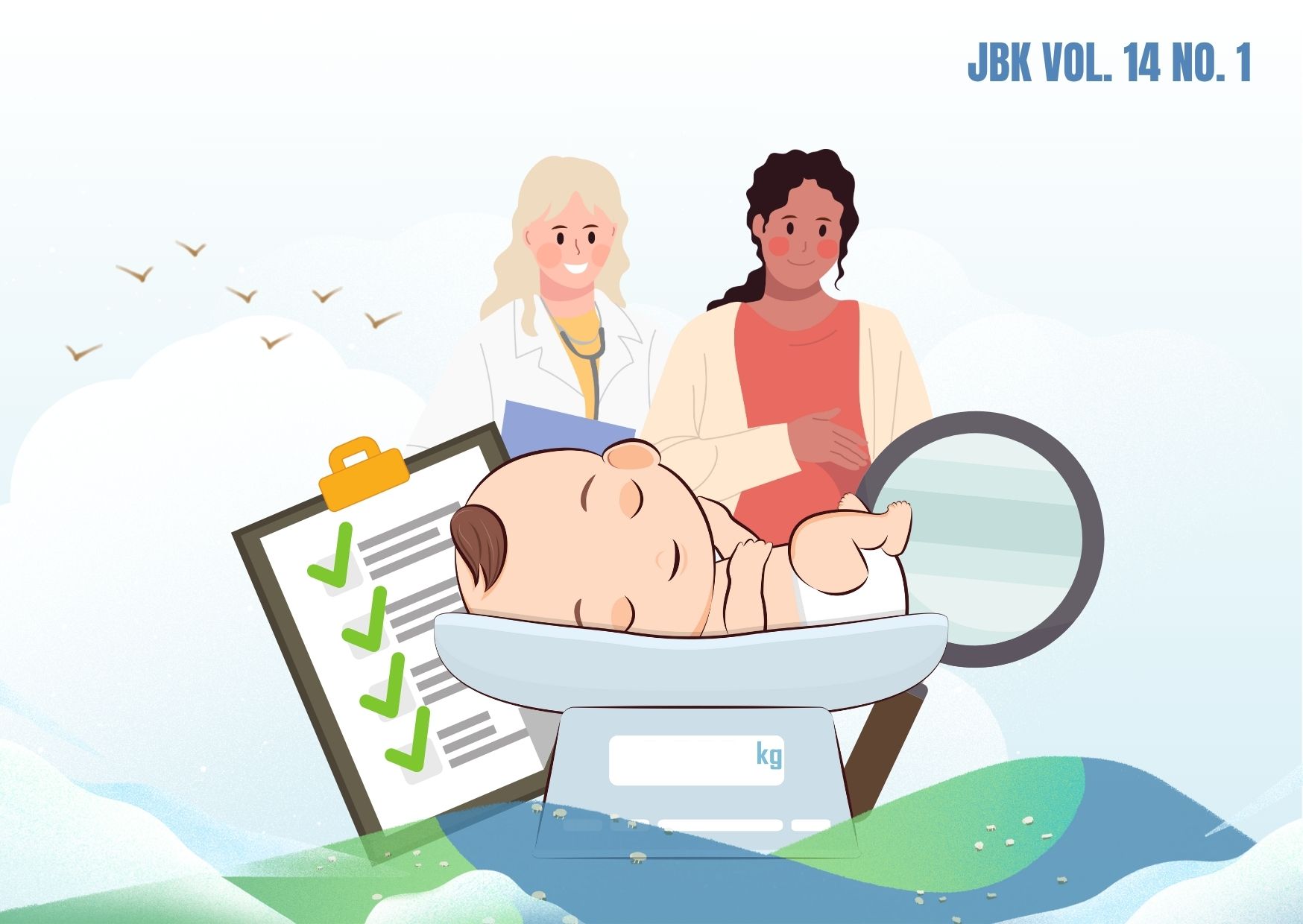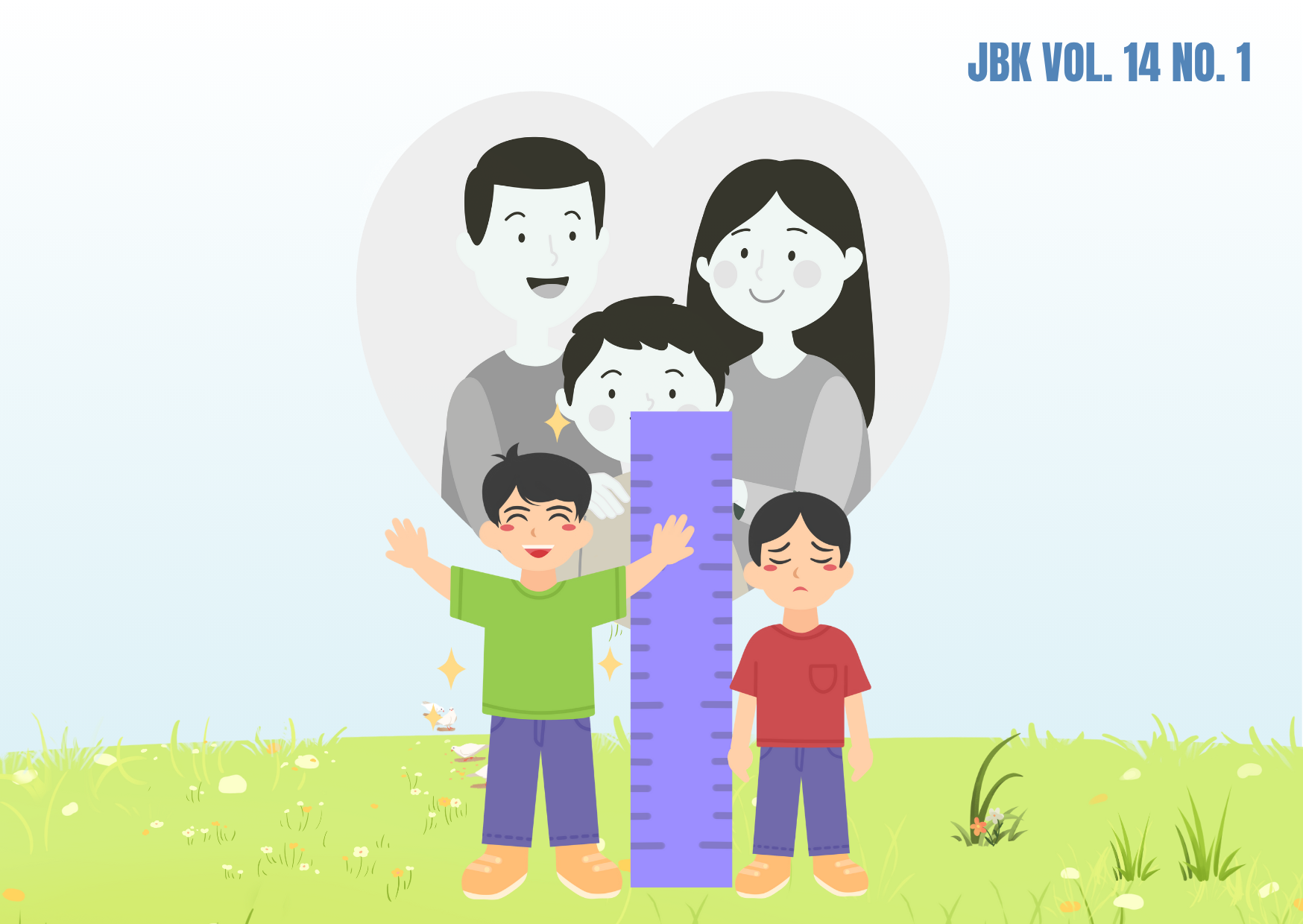ANALYSIS OF THE RELATIONSHIP BETWEEN CHARACTERISTICS OF TEENAGERS AND FAMILY FUNCTIONS ON TEENAGERS' BEHAVIOR FOR CONSUMING DRUGS IN EAST JAVA

Downloads
This research aims to analyze the relationship between the characteristics of teenagers and family functions as well as the understanding of narcotics, psychotropics, and addictive substances on the behavior of teenagers consuming drugs in East Java as a response variable with a binary scale. The data source obtained through secondary data from the Performance Survey and Accountability Program 2019 with the observation unit teenagers aged 10-24 years. The sample used is 4,649. The analytical method used is descriptive statistics, the Chi-square method, and Odds Ratio (OR). The percentage of adolescent consuming drugs is 4.1% descriptively. The relationship analysis shows that the variables significantly related to young people's behavior in consuming drugs are gender, place of residence, level of education, age group, religious values, and psychological consequences. From the OR figures concluded that young males are 3.2 times more at risk of consuming drugs than young females. From the aspect of family function, it can be inferred that the percentage of young substance abusers from families who apply religious values is greater than those who do not. The findings of this research show that the risk of young people from families who practice religious functions becoming substance abusers are 1.61 times more compared to families who do not practice it. The understanding of drugs is not always related to teenagers' behavior in consuming drugs, because those who understand the psychological consequences of substance abuse are also 1.64 times more at risk of using drugs compared to teenagers who do not understand.
National Anti Narcotics Agency. Penggunaan Narkotika di Kalangan Remaja Meningkat [Internet]. BNN. 2019. p. 1. Available from: https://bnn.go.id/penggunaan-narkotika-kalangan-remaja-meningkat/
Nurmaya A. Penyalahgunaan Napza di Kalangan Remaja (Studi Kasus pada 2 Siswa di MAN 2 Kota Bima). J Psikol Pendidik dan Konseling [Internet]. 2016;2(1):26–32. Available from: https://doi.org/10.26858/jpkk.v2i1.2064
Asmoro DOS, Melaniani S. Pengaruh Lingkungan Keluarga terhadap Penyalahgunaan NAPZA pada Remaja. Biometrika dan Kependud [Internet]. 2016;5(1):80–87. Available from: https://doi.org/10.20473/jbk.v5i1.2016.80-87
Bunsaman SM, Krisnani H. Peran Orangtua dalam Pencegahan dan Penanganan Penyalahgunaan Narkoba pada Remaja. Pros Penelit Pengabdi Kpd Masy [Internet]. 2020;7(1):221–228. Available from: https://doi.org/10.24198/jppm.v7i1.28132
Zulfa K, Purwandari E. Pola Keluarga Remaja Berisiko Penyalahgunaan Napza. Indig J Ilm Psikol [Internet]. 2016;1(1):74–83. Available from: https://doi.org/10.23917/indigenous.v1i1.3716
Herawati T, Pranaji DK, Pujihasvuty R, Latifah EW. Faktor-Faktor yang Memengaruhi Pelaksanaan Fungsi Keluarga di Indonesia. J Ilmu Kel dan Konsum [Internet]. 2020;13(3):213–227. Available from: https://doi.org/10.24156/jikk.2020.13.3.213
National Population and Family Planning Board. Survei Kinerja dan Akuntabilitas Program KKBPK (SKAP) REMAJA Tahun 2019. Tim BKKBN, editor. Gorontalo: BKKBN; 2019. 4 p.
Turnip J, Wahyuningsih SE, Maryanto. Analisa Peranan Penyidik Polri dalam Penanganan Tindak Pidana Narkoba di Polres Rembang Jawa Tengah. J Huk Khaira Ummah [Internet]. 2018;13(1):95–104. Available from: http://jurnal.unissula.ac.id/index.php/jhku/article/view/2587
Kemala S. Survei Kinerja dan Akuntabilitas Program (SKAP) BKKBN Tahun 2019. Simsssert BPS. 2020. p. Simsssert.
Chawla N V., Bowyer KW, Hall LO, Kegelmeyer WP. SMOTE: Synthetic Minority Over-sampling Technique. J Artif Intell Res [Internet]. 2002;16:321–357. Available from: https://doi.org/10.1613/jair.953
Budyanra B, Azzahra GN. Penerapan Regresi Logistik Ordinal Proportional Odds Model pada Analisis Faktor-Faktor yang Mempengaruhi Kelengkapan Imunisasi Dasar Anak Balita di Provinsi Aceh Tahun 2015. Media Stat [Internet]. 2017;10(1):37–47. Available from: https://doi.org/10.14710/medstat.10.1.37-47
Saleh HD, Rokhmah D, Nafikadini I. Fenomena Penyalahgunaan NAPZA di Kalangan Remaja Ditinjau dari Teori Interaksionisme Simbolik di Kabupaten Jember (The Phenomenon of Substance Abuse among Adolescents Based on Symbolic Interactionism Theory in Jember Regency). e-Jurnal Pustaka Kesehat [Internet]. 2014;2(3):468–475. Available from: https://jurnal.unej.ac.id/index.php/JPK/article/view/2349
Siswantoro T. Analisis Pengaruh Predisposing, Enabling dan Reinforcing Factors terhadap Kepatuhan Pengobatan TB Paru di Kabupaten Bojonegoro. Adm Kebijak Kesehat [Internet]. 2012;10(3):152–158. Available from: http://journal.unair.ac.id/download-fullpapers-akk171d7b8caffull.pdf
Sitorus RJ, Natalia M. Perilaku Seksual Berisiko Pengguna Narkotika. Kesehat Masy Nas [Internet]. 2015;9(4):348–352. Available from: https://doi.org/10.21109/kesmas.v9i4.748
Priescisila IR, Mahmudah M. Hubungan Faktor Lingkungan dengan Penggunaan Trihexyphenidyl pada Remaja di BNN Kota Surabaya. Biometrika dan Kependud [Internet]. 2016;5(1):70–79. Available from: https://doi.org/10.20473/jbk.v5i1.2016.70-79
Amanda MP, Humaedi S, Santoso MB. Penyalahgunaan Narkoba di Kalangan Remaja (Adolescent Substance Abuse). Pros Penelit Pengabdi Kpd Masy [Internet]. 2017;4(2):339–345. Available from: https://doi.org/10.24198/jppm.v4i2.14392
Matwimiyadi. Hubungan Terhadap Tingkat Pendidikan dan Pekerjaan dengan Penyalahguna Napza. Kesehat Komunitas [Internet]. 2014;2(5):211–214. Available from: https://jurnal.htp.ac.id/index.php/keskom/article/view/76
Maharti VI. Faktor-Faktor yang Berhubungan dengan Perilaku Penyalahgunaan Narkoba pada Remaja Usia 15-19 Tahun di Kecamatan Semarang Utara Kota Semarang. Kesehat Masy [Internet]. 2015;3(3):945–953. Available from: https://ejournal3.undip.ac.id/index.php/jkm/article/view/12777
Firdaus AMY, Hidayati E. Pengetahuan dan Sikap Remaja terhadap Penggunaan NAPZA di Sekolah Menengah Atas di Kota Semarang. Keperawatan Jiwa [Internet]. 2018;6(1):1–7. Available from: https://doi.org/10.26714/jkj.6.1.2018.1-7
Dekovic M. Risk and Protective Factors in the Development of Problem Behavior During Adolescence. Youth Adolesc [Internet]. 1999;28(6):667–685. Available from: https://doi.org/10.1023/A:1021635516758
Copyright (c) 2022 Jurnal Biometrika dan Kependudukan

This work is licensed under a Creative Commons Attribution-NonCommercial-ShareAlike 4.0 International License.
Copyright ©2022 Jurnal Biometrika dan Kependudukan (Journal of Biometrics and Population)
This work is licensed under a Creative Commons Attribution-NonCommercial-ShareAlike 4.0 International License.
1. Copyright of all journal manuscripts is held by the Jurnal Biometrika dan Kependudukan.
2. Formal legal provisions to access digital articles of the electronic journals are subject to the provision of the Creative Commons Attribution-ShareAlike license (CC BY-NC-SA), which means that Jurnal Kesehatan Biometrika dan Kependudukan to keep, transfer media/format, manage in the form of databases, maintain, and publish articles.
3. Published manuscripts both printed and electronic are open access for educational, research, and library purposes. Additionally, the editorial board is not responsible for any violations of copyright law.



































